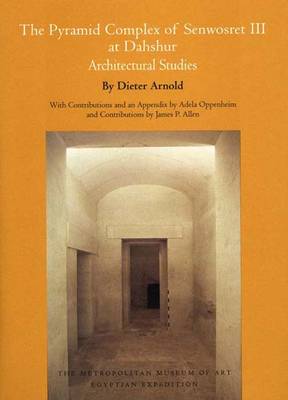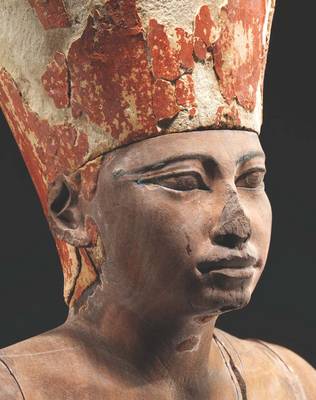Metropolitan Museum of Art
3 total works
The author considers the complex's place within this chain of development and examines various archaistic features indicating that Senwosret III's builders were studying the architecture of the Third Dynasty Djoser complex at Saqqara, which was already one thousand years old. The book is illustrated with photographs, line drawings, and computer reconstructions. An appendix provides a preliminary report on the relief decoration of the king's temples and the chapels of the royal women, as well as the objects found in the burial apartments.
The exploration of the Middle Kingdom cemeteries at El-Lisht, twenty miles south of Cairo, began in 1882, with the opening of the entrances to the pyramids of Amenenmhat I and Senwosret I. From 1906 to 1934 and again from 1984 to 1991 the Egyptian Expedition of The Metropolitan Museum of Art, New York, worked intensively at the Lisht site. In the present volume Dieter Arnold describes and documents the architecture and wall decoration of tombs built for courtiers and officials around the two royal pyramids at Lisht. Ancient tomb robbers and quarrymen had almost totally denuded the Middle Kingdom buildings, but excavation and careful study of remaining foundations, architectural elements, and fragments of relief decoration have enabled the author and his team to reconstruct to a fair degree the form and appearance of these masterpieces of ancient Egyptian architecture. The textual portion ends with an appendix written by James P. Allen, professor of Egyptology at Brown University, that reviews an important biographical inscription from one of the tombs. This amply illustrated volume, which also publishes for the first time one of the most highly artistic painted sarcophagi of the Middle Kingdom, is the twenty-eighth in the series documenting the Museum's fieldwork in Egypt. It provides the architectural background for innumerable sculptures and small objects excavated in the tombs at El-Lisht that are now part of the collections of the Egyptian Museum, Cairo, and of The Metropolitan Museum of Art.
(This title was originally published in 2008.)
Ancient Egypt Transformed
by Adela Oppenheim, Dorothea Arnold, Dieter Arnold, and Kei Yamamoto
The Middle Kingdom (ca. 2030-1700 B.C.), the second great era of ancient Egyptian culture, was a transformational period during which the artistic conventions, cultural principles, religious beliefs, and political systems formed during earlier dynasties were developed and reimagined. This comprehensive volume presents a detailed picture of the art and culture of the Middle Kingdom, arguably the least known of Egypt's three kingdoms yet a time of remarkable prosperity and unprecedented change. International specialists present new insights into how Middle Kingdom artists refined existing forms and iconography to make strikingly original architecture, statuary, tomb and temple relief decoration, and stele.
Thematic sections explore art produced for different strata of Egyptian society, including the pharaoh, royal women, the elite, and the family, while other chapters provide insight into Egypt's expanding relations with foreign lands and the themes of Middle Kingdom literature. More than 250 objects from major collections around the world are sumptuously illustrated, many with new photography undertaken specifically for this catalogue. This fascinating publication is a much-needed contribution to understanding ancient Egypt's art and culture, and shows how the Middle Kingdom served as the bridge between the monumentality of the pre vious centuries and the opulent splendor of later years.


